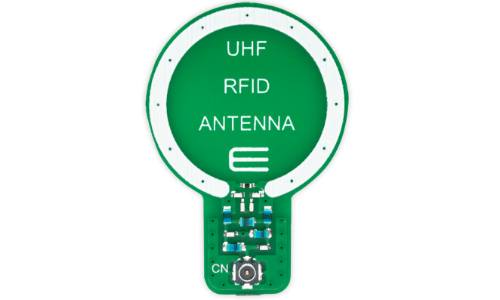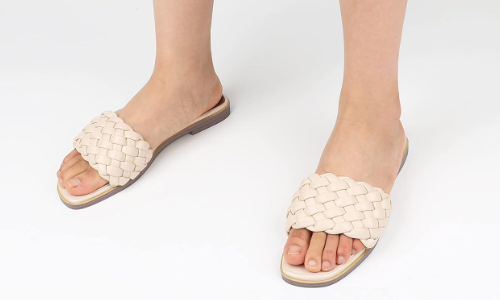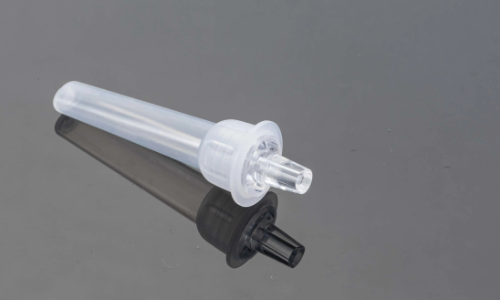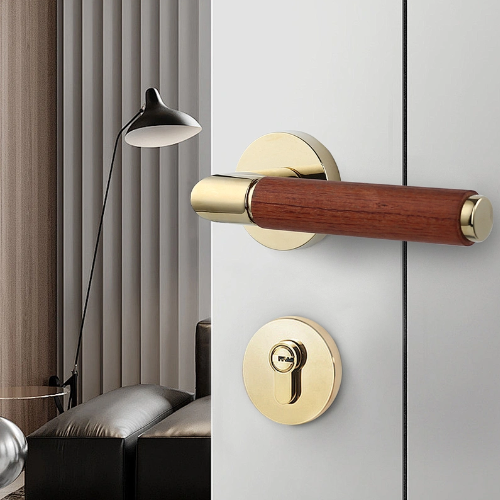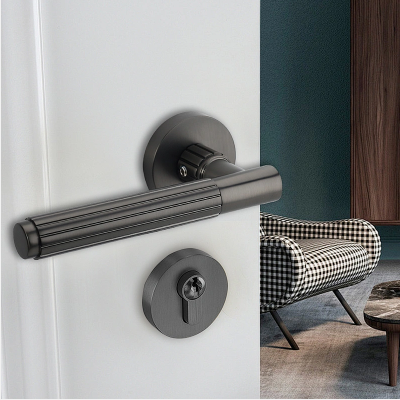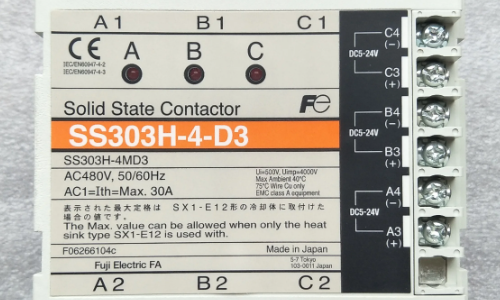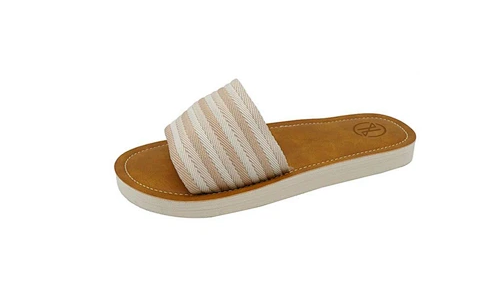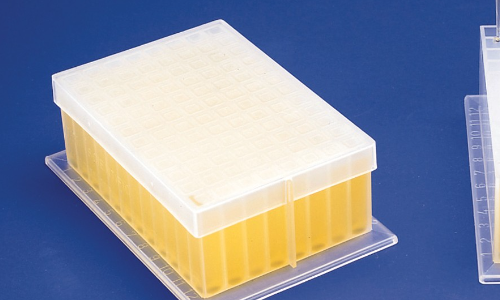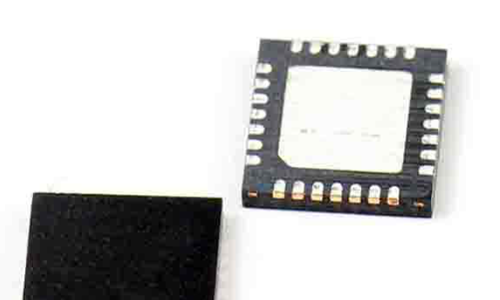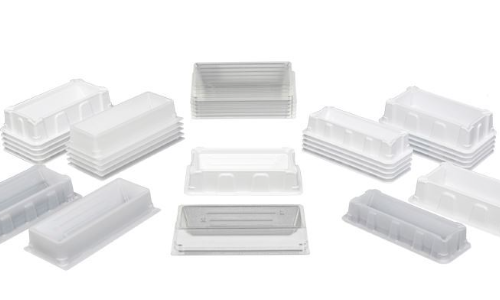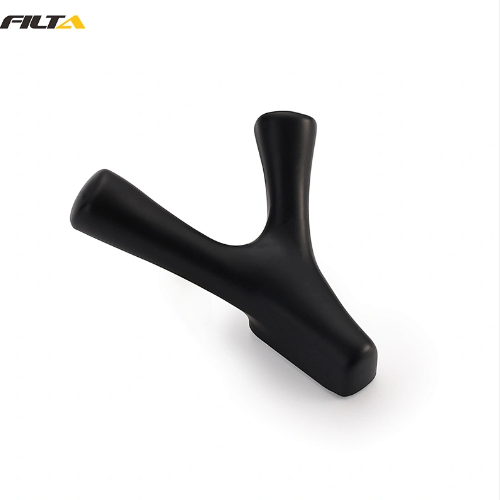汤喆's Posts (134)
Prioritize cushioned insoles in women's flat foot slippers for additional support and comfort. Are trying to find slippers with integrated arch assist or the choice to insert custom orthotic inserts for customized consolation and support.
The Greatest Slippers for Women with Flat Feet
Relaxed Ladies's Flat Foot Slippers
Arch Guide in Girls's Flat Foot Slippers
Charming Ladies's Flat Foot Slippers
Colorful Alternatives for Women's Flat Foot Slippers
Supportive Girls's Flat Foot Slippers
Ankle and Heel Help in Girls's Flat Foot Slippers
Strong Girls's Flat Foot Slippers
Long Lasting Materials for Ladies's Flat Foot Slippers
Slip Resistant Soles for Women's Flat Foot Slippers
What Features Should I Look for in Women's Flat Foot Slippers?
How Can Cushioned Insoles Benefit Women with Flat Feet?
Why Is Arch Support Important in Women'S Flat Foot Slippers?
Are There Stylish Options Available for Women'S Flat Foot Slippers?
What Color Options Are Available for Women'S Flat Foot Slippers?
How Do Women'S Flat Foot Slippers Provide Support?
What Makes Women'S Flat Foot Slippers Durable?
Do Women'S Flat Foot Slippers Have Slip Resistant Soles?
If you have any needs for heva womens knit sandals, please contact HEVA for your best fit! Your knitted sandals for ladies will work best when it fits snugly and acts as an extension of your foot, without sliding around.
Interested in limestone floor tiles? Limestone stands as a favored option for flooring tiles, prized for its durability and inherent beauty. This sedimentary rock originates from the accumulation of organic matter like shells and coral over extensive periods. Available in a spectrum of colors, from creamy white to inviting beige, limestone tiles impart an air of sophistication to any space. Moreover, they demand minimal upkeep and, with appropriate maintenance, can endure for years to come. When contemplating limestone flooring tiles for your home, prioritize providers offering superior materials and professional installation services to ensure lasting satisfaction.
This comprehensive guide delves into the intriguing realm of limestone, covering everything from its formation to its wide-ranging applications. Explore the unique characteristics, advantages, and uses of this versatile natural stone, and deepen your appreciation for its aesthetic appeal and functional versatility.
Whether you're contemplating limestone for an upcoming project or seeking to broaden your understanding of its significance and utility, this guide serves as your ultimate resource, answering essential questions and providing valuable insights into the multifaceted world of limestone.
What is Limestone?
Were you aware that limestone constitutes approximately 10% of the world's sedimentary rock? This robust sedimentary rock is forged through mineral deposits atop the Earth's crust within aquatic environments, primarily composed of the minerals calcite and aragonite, which are distinct crystal forms of calcium carbonate.
How does limestone come to be? Typically, limestone forms from the fragmented remnants of shells belonging to aquatic organisms and coral, among other marine life. Over millions of years, these fragments accumulate on the seabed, undergoing compression to ultimately shape into the durable rock we recognize as limestone.
Where does Limestone Come From?
Numerous varieties of limestone are found worldwide, including within Britain, notably in the Peak District and the Cotswolds.
The Romans were the first to recognize that British limestone could be polished to resemble marble. However, due to production methods and costs, British limestone tiles are often expensive, leading to a preference for imported options, primarily from countries like Turkey and India.
Presently, the bulk of natural stone limestone kitchen tiles, including limestone, are processed and manufactured in Turkey and India. Geologically, Turkey boasts an unparalleled array of natural stone variations, with hundreds of marbles, travertines, limestones, and granites scattered across its landscape, with new discoveries continuously emerging.
Ever wondered about the color of limestone? Generally, the lighter the limestone, the softer it tends to be, which can influence its practical applications. Let's delve into various types of limestone and their typical coloring:
Jura Limestone:
Found in the southern part of Germany, Jura limestone is sourced directly from quarries, featuring numerous sedimentary layers that exhibit different hues. While Jura grey limestone and Jura beige limestone are commonly extracted from the same location, their coloring may vary.
Dijon Limestone:
Another variant, Dijon limestone, boasts a lovely beige hue with delicate grey fossil patterns set against a soft beige backdrop. With its antiqued surface and worn edges, it exudes a charming, weathered appearance, perfect for enhancing kitchens, open living areas, and cozy cottages.
Quality Grading:
Limestone wall tiles are typically classified into two grades:
1st Quality: Recognized as a premium grade, these limestone bathroom tiles undergo meticulous selection on the production line to meet specific color and pattern standards. Tiles that deviate from these standards are classified as commercial grade.
Commercial Grade: Tiles that do not meet the criteria for 1st quality selection are categorized as commercial grade. While these tiles maintain structural integrity, they may exhibit colors and patterns outside the premium grade standards.
It's essential to note that 1st quality tiles represent a smaller portion of a factory's overall production, making them pricier. Unfortunately, some retailers may mislabel commercial grade products as premium, underscoring the importance of discernment when selecting natural stone or porcelain tiles.
Finishes:
Limestone tiles are available in various finishes:
Honed: Features a flat matte surface with sharp edges.
Tumbled: Presents an aged, weathered appearance with rounded edges.
Polished: Offers a shiny, reflective surface with sharp edges.
Brushed: Boasts a smooth, textured surface with rounded edges, retaining the tile's original color better than tumbled finishes.
Half Honed & Tumbled: Combines elements of both finishes, featuring flat and undulating surfaces.
Argento Silver Honed Limestone: Many limestone tiles are polished, but the degree of polishing depends on the stone's density. Softer limestone may not hold up as well to polishing and may wear down over time with foot traffic.
Pros and Cons:
Limestone flooring presents both advantages and disadvantages:
Advantages:
Natural Beauty: Limestone exudes natural elegance, enhancing any space with its unique patterns.
Versatility: Available in various colors and finishes, limestone complements diverse interior and garden designs.
Durability: Limestone withstands heavy foot traffic, making it suitable for high-traffic areas.
Cooling Effect: Limestone's natural coolness is ideal for warm climates or areas requiring temperature control.
Hypoallergenic: Resistant to allergens, limestone helps maintain indoor air quality.
Disadvantages:
Porous Nature: Susceptible to stains and moisture damage, limestone requires sealing for protection.
Maintenance: Regular cleaning and upkeep are necessary to preserve limestone flooring.
Prone to Scratches: Relatively softer compared to other stones, limestone may scratch or chip.
Limited Acid Resistance: Acidic substances can damage limestone surfaces if not promptly cleaned.
Weathering in Outdoor Environments: Outdoor limestone paving may weather over time, including fading and surface erosion.
Ultimately, the suitability of limestone flooring depends on individual needs, preferences, and maintenance capabilities. Proper care and maintenance can enhance the benefits of limestone kitchen floor tiles while mitigating its drawbacks, indoors and out. For additional insights, explore our guide on maintaining natural limestone flooring and our tile advice page for tips and tricks.
LEESTE stands out as the premier stone processing enterprise, boasting the largest and most advanced facilities in the industry. Our commitment to excellence extends to offering top quality custom sized limestone indoor floor tiles, backed by insurance for added peace of mind.
The Various Types of Plastic Extraction Tubes
FAQs Regarding Plastic Extraction Tubes
Static Signage Overview:
Advantages of Static Signage:
Disadvantages of Static Signage:
Digital Signage Overview:
Advantages of Digital Signage:
Disadvantages of Digital Signage:
Conclusion:
Increase Business Visibility with Outdoor Digital Signage
The Blessings of Outdoor Digital Signage for Agencies
FAQs about Outdoor Digital Signage for Business
Modern Designs In Door Handles
1. Total Concept Collections: Harmonizing Design Elements
2. Bronze Door Hardware: A Blend of Tradition and Modernity
3. Black Door Hardware: Bold and Sophisticated
4. Satin gold Door Hardware: introducing luxurious accents
5. PVD Finishing: Combining Durability with Aesthetics
6. Simplicity and Minimalism: capturing understated elegance
7. Sustainable Door Hardware: Embracing Eco-conscious design
8. T-shaped door handles: the essence of contemporary chic
9. Ergonomic Hardware: Where comfort and design converge
10. Timeless Door Hardware: Classic Beauty
What is the Purpose of a Window Facing Display?
Why Are Window Displays Important?
The Advantages of a Window Display
Display a Variety of Content
Door Lever Handle
Lever Handles On Rose
Lever Handles On Backplate
Operating Mechanisms
Lever lock
Lever bathroom
Lever latch
Pull Handles
Pull handles on rose
Pull handles on a backplate
Back to back pull handles
Bolt through pull handles
Face fix handles
Sliding door handles
Door Knobs
Dummy door knobs
Passage door knobs
Privacy door knobs
Keyed entry door knobs
Door Levers VS Door Knobs
What are Solid State Contactors?
How To Select The Right Solid State Contactors ?
Key Points
Here's the recommended procedure:
Amongst these issues are the subsequent:
FAQs about Selecting the Right Solid State Contactors
What factors should I consider when selecting solid state relay contactor?
How do I determine the appropriate load type and current rating for a solid state contactor?
What is the significance of operating voltage and frequency when selecting a solid state contactor?
What control input options should I consider when choosing a solid state contactor?
Why are thermal management and protection features important in solid state contactors?
Advantages of Solid State Relays (SSRs) and contactors:
Reliability:
Switching Speed:
Noise Reduction:
Complete range of solid state contactors from GUOYUAN ELECTRONICS
Check out all of solid state contactors options to find what you need and contact GUOYUAN ELECTRONICS for more imformation.
Here are some features to look for sandals:
The selection of appropriate seaside Sandals
Turn Flops: merits and Demerits
Slides: Why they may be a Prudent selection
Water footwear: benefits for seaside pastimes
Sport Sandals: best for Trailblazing at the beach
Espadrilles: stylish and practical opportunity
Jelly Sandals: water resistant and easy to preserve
Gladiator Sandals: elegant and at ease for seashore Strolls
Slip On Sandals: handy for swift journeys to the seashore
Wedge Sandals: elevating top with out Compromising comfort
Barefoot Sandals: Embracing the Sand and Sea
FAQs about Choosing the Best Beach Sandals
What type of sandal is best for the beach?
Are flip flops a good choice for the beach?
What are the benefits of water shoes for beach activities?
Can I wear espadrilles to the beach?
Are gladiator sandals a good choice for beach walks?
What are barefoot sandals and why are they a unique option for the beach?
Slate kitchen flooring is frequently associated with country and farmhouse aesthetics, yet its versatility transcends stylistic boundaries, making it a timeless choice for any property type, be it modern or traditional.
Slate floor tiles are regarded for their sturdiness and resistance to stains, scratches, and moisture, making them best for excessive-visitors regions. With a huge kind of hues and textures available, they can upload a completely unique and organic appeal to any space.
Slate patio tilescome in different types which include honed, cleft, and tumbled slate, each providing a wonderful appearance and feel. While deciding on slate tiles, elements like size, shape, shade, thickness, location, and preservation necessities ought to be cautiously taken into consideration to make sure the first-rate in shape in your desires.
- Slate Flooring Suits A Variety of Kitchen Styles
No matter your kitchen's style, whether it leans toward shaker and retro or sleek and modern, slate stone flooring offers a practical and stylish solution underfoot. While often recognized for its dark grey hue, slate encompasses a range of tones, from classic black and grey to hints of red, purple, gold, and blue, depending on its location and mineral composition.
Pair slate floors with dark cabinets and countertops for a dramatic, moody ambiance, or integrate them seamlessly into a sleek, minimalist design. For a rustic country feel, opt for classic elements like shaker units, wooden worktops, and a generous butler sink.
Consider your kitchen's layout and functionality when selecting flooring. Is it a dedicated space for meal preparation or an open-plan area for entertaining? Do you have pets or children? Are there bi-fold or French doors opening onto the garden? These factors will help determine the best flooring choice for your lifestyle and design preferences.
- Slate Flooring Retains The Heat
Cold kitchen floors are undoubtedly undesirable, particularly during chilly weather when heating is scarce. However, slate floors possess the remarkable ability to warm up beautifully when exposed to heat from sources such as ovens or central heating systems. This inherent heat retention property of slate tiles contributes to maintaining a cozy ambiance within the home.
This feature of natural slate floor tiles is particularly advantageous for homeowners considering the installation of underfloor heating. While underfloor heating is a significant investment, it offers a luxurious and efficient heating solution. Stone tiles, including slate, are particularly compatible with underfloor heating systems, as they readily absorb and distribute heat. As the trend towards open-plan living spaces continues to grow, many homeowners opt for underfloor heating to maintain a clean, modern aesthetic without the need for wall-mounted radiators.
- Slate Flooring Is Water-Resistant And Durable
Given that the kitchen is typically the most active room in the house, it's crucial to select flooring that can withstand the rigors of daily use. It should be resilient enough to endure occasional spills from dishwashing, as well as fluctuations in temperature and moisture levels during cooking. Slate and stone floors emerge as exceptional solutions, offering durability without straining your budget.
Natural slate flooring boasts stain-resistant and waterproof properties, making it an ideal option for high-traffic cooking areas.
The gray tones of slate flooring beautifully complement the sage green and burnt orange kitchen cabinets in this stunning Victorian house adorned with heritage hues.
- Slate Flooring Is An Affordable Option
Kitchen renovations often come with hefty price tags, especially when indulging in luxurious features like marble splashbacks and bespoke oak cabinetry. However, for those seeking to save funds, it's wise to avoid pricier options such as exotic wood flooring or luxury stone tiles like marble, and instead, opt for the reliable and affordable choice of slate.
Slate stands out as one of the most practical and cost-effective types of stone flooring, offering a timeless appeal without breaking the bank.
- Slate Flooring Will Last For Years
While interior design trends may evolve over time, slate kitchen flooring has remained a steadfast favorite, revered for its enduring popularity and practicality.
The current trend towards embracing natural elements in interior design makes slate floor tiles an ideal choice for achieving this aesthetic. With their inherent variations, each slate tile possesses a unique character, contributing to the creation of a distinctive and personalized space. Moreover, slate stands out as one of the most durable flooring materials available, ensuring longevity and resilience in the kitchen environment. When properly sealed, slate maintains its elegant and natural appearance, promising years of timeless beauty and functionality.
Is Slate Flooring Good for Kitchens?
Stone floor tiles offer a diverse array of sizes, colors, and textures, ensuring they can seamlessly complement any kitchen style, whether it's rustic country or sleek contemporary. From the charming warmth of a farmhouse kitchen to the minimalist elegance of a modern space, stone tiles provide a versatile foundation for diverse design schemes.
In terms of maintenance, slate floors are a breeze to clean with a simple mop, and their waterproof nature alleviates concerns about water spills. For added protection and ease of maintenance, consider exploring the latest sealants available. Once applied, these sealants can enhance the floor's durability and make upkeep even more straightforward.
While the selection may not be as extensive as that of vinyl kitchen flooring ideas, slate remains a timeless and classic choice, offering enduring beauty and practicality for years to come.
Are Slate Floors out of Style?
While slate floors may not be considered the trendiest option for kitchen flooring, they remain a timeless choice that has enjoyed enduring popularity for decades, and this trend is expected to persist.
Slate stands out as a classic selection for kitchens, prized for its durability and longevity. With proper care, slate tiles can withstand the rigors of daily use and maintain their charm over time. Moreover, they are easy to clean, further enhancing their appeal for busy kitchen environments. Notably, slate tiles are no longer limited to traditional country kitchens; contemporary and modern styles are increasingly incorporating this versatile material, showcasing its adaptability and timeless allure.
What Factors Should Be Considered When Choosing Slate Floor Tiles?
When choosing slate floor tiles, factors such as size, shape, color, thickness, location, and intended use should be taken into account. It is also important to consider the maintenance and sealing requirements to ensure the tiles remain in top condition.
LEESTE stands out as the premier stone processing enterprise, boasting the largest and most advanced facilities in the industry. Our commitment to excellence extends to offering top quality custom sized slate stone tile, such as 12x12 slate tile, backed by insurance for added peace of mind.
Definition of 96 Deep Well Plate
What Are the Benefits of Using 96 Deep Well Plates?
Are 96 Deep Well Plates Reusable?
Where Can I Purchase 96 Deep Well Plates?
What Are the Different Types of 96 Well Plates?
FAQs about 96 Deep Well Plates
What is the Purpose of a Window Facing Display?
Why Are Window Displays Important?
The Advantages of a Window Display
Display a Variety of Content
Door Lever Handle
Lever Handles On Rose
Lever Handles On Backplate
Operating Mechanisms
Lever lock
Lever bathroom
Lever latch
Pull Handles
Pull handles on rose
Pull handles on a backplate
Back to back pull handles
Bolt through pull handles
Face fix handles
Sliding door handles
Door Knobs
Dummy door knobs
Passage door knobs
Privacy door knobs
Keyed entry door knobs
Door Levers VS Door Knobs
Competitive and Segmentation Analysis:
What Is An RF Demodulator?
What Is the Function of An RF Demodulator?
How Does Demodulation Work?
Where Are You Going?
How to Choose Outdoor Walking Boots
1. Get the Right Fit
2. Consider the Type of Terrain You’ll be Walking On
3. Look for Waterproof and Breathable Features
4. Check the Sole
5. Be Mindful of Your Foot Health
6. Take the Time to Research
7. Test the Waterproofing
8. Settle on a Material that Suits
9. Breaking in Walking Boots
In the realm of beige natural stones, a diverse array of options exists, characterized by similar nature and tonalities, spanning from the deepest to the lightest hues. Despite their commendable quality to price ratio, these royal beige marble alternatives haven't gained widespread recognition. Nonetheless, they serve as excellent considerations for any project involving omani beige marble slab materials.
The widespread utilization of omani beige marble is propelled by its unwavering high quality, captivating light beige hue, impressive strength, and minimal water absorption. The convergence of these benefits, coupled with its competitive pricing and ready accessibility, positions omani marble as the preferred choice for building owners, architects, and contractors alike.
What Is Beige Marble Tile?
Beige marble tile refers to a type of marble tile that exhibits a predominantly beige color palette. Marble is a natural stone that comes in various colors and patterns, and beige marble specifically features hues ranging from light tan to a deeper beige. The tiles are crafted from marble blocks, cut into desired shapes, and polished to achieve a smooth, reflective surface.
Beige marble tiles are popular for flooring, walls, and various interior design applications due to their neutral and versatile appearance. They can complement a wide range of design styles, providing a warm and timeless aesthetic. Some well-known varieties of beige marble include Crema Marfil, Botticino, and Emperador, each possessing distinct veining patterns and shades within the beige spectrum. These tiles are appreciated for their natural beauty, durability, and the touch of sophistication they add to architectural and design projects.
What Is Beige Marble Tile Used for?
Beige marble slab is widely used for various applications in interior and exterior design due to its aesthetic appeal and versatility. Beige marble tile is often used for bathroom countertops, counter & table tops, interior flooring, and wall cladding and so on. Some common uses of beige marble include:
Flooring: Beige marble is a popular choice for flooring in residential and commercial spaces. Its neutral color blends well with different design styles, providing a timeless and elegant look.
Countertops: Beige marble is often used for kitchen and bathroom countertops, adding a touch of sophistication to the space. Its durability makes it suitable for high-traffic areas like kitchens.
Wall Cladding: Beige marble tiles or slabs are utilized for wall cladding, enhancing the visual appeal of interior walls. This application is common in both residential and commercial buildings.
Bathroom Interiors: Beige marble is frequently chosen for various bathroom elements, including shower walls, vanity tops, and even bathtub surrounds. Its luxurious appearance creates a spa-like atmosphere.
Fireplace Surrounds: The natural beauty of beige marble makes it a popular choice for fireplace surrounds, adding warmth and elegance to living spaces.
Stairs and Steps: Beige marble can be used for staircase treads and risers, providing a durable and aesthetically pleasing solution for both residential and commercial buildings.
Exterior Facades: In some cases, beige marble is used for exterior facades, contributing to the overall architectural appeal of buildings.
Decorative Items: Smaller pieces of beige marble, such as sculptures, vases, or decorative accents, are used to add a touch of luxury and refinement to interior spaces.
Overall, the versatility, durability, and aesthetic qualities of beige marble make it a sought-after material for a wide range of architectural and design applications.
What Are the Types of Beige Marble Tile?
There are many options available even after you pick the colour of your marble. Types of Beige marble include:
Bianco Beige Marble
Quarried in Turkey, Bianco beige marble has a smooth finish. The stone is strong and is available in vibrant textures..
Crema Beige Marble
Crema Beige marble is a beautiful, cream-toned stone with soft veins of yellow/cinnamon/white and even goldish beige.
It is often used for cream marble flooring, this is the most popular type of beige marble. It comes with a polished, elegant finish.
Beige Marble
Travertine marble is often visibly porous, giving it a more natural, textured look. Once honed, this marble is very easy to clean and maintain. As part of maintenance, this marble requires a yearly sealant application to keep it resistant to wear.
How To Select the Right Beige Marble for Your Home?
Selecting the perfect beige marble for your space can be tricky; however, Leeste experts can guide you through this process.
The right shade of marble can dynamically transform the look of your home, so pick a shade that goes well with the rest of your décor. Depending on your tastes, you can choose between muted, complementary shades and bolder tones like red or pink.
Here are a few points to remember:
Where to Apply?
Beige marble finds versatile use in bathroom countertops, counter and tabletops, as well as interior flooring and wall cladding. Its presence can infuse any space with an understated grandeur, but it's crucial to select the optimal location for maximum aesthetic impact in your home.
Choosing the Right Dimensions:
Beige marble is offered in various sizes. Opt for the appropriate dimensions to avoid additional expenses associated with cutting the marble to fit your specific requirements.
Selecting the Finish:
Beige marble comes in finishes such as glossy, high gloss, satin, rustic, and matte. With a wide array of options in both colors and finishes, you can easily determine which finish complements the rest of your interior design.
Maintenance Considerations:
While marble has the potential to last for decades, it necessitates the right level of maintenance and care. Keep this in mind as you explore your options to ensure the longevity and beauty of your chosen beige marble.
Benefits of Using Beige Marble
Beige marble tile has the innate ability to draw attention due to its refined appearance. The appealing finish that the natural stone offers is what makes it a must-have in your space. If you are looking at something other than white and yet want the subtlety of a light shade, beige marble should be your first choice.
LEESTE is the largest and the most advanced stone processing enterprise. LEESTE can provide high quality custom size omani beige marble tile products which are insuranced.
